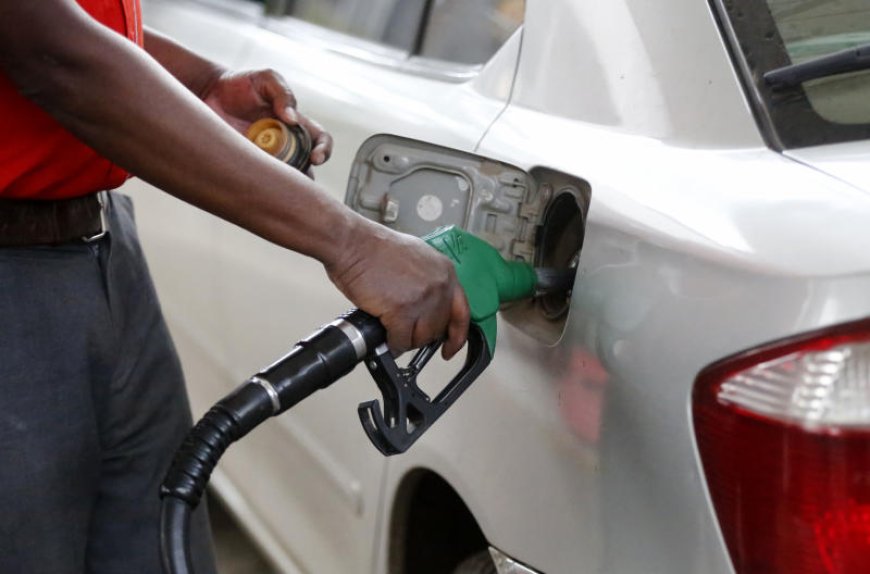By Joshua Cheloti
The cost of living in the country is set to go even higher with the latest review of the fuel prices.
This is after the Energy and Petroleum Authority (EPRA) announced an upward review of the fuel prices across the country.
In their latest review of the prices, EPRA on Thursday, April 14, 2022, announced that petrol, diesel, and kerosene will be retailing at Ksh9.9 more than the current price in the next one month.
[caption id="attachment_6327" align="alignnone" width="512"]

File image of a fuel pump at a gas station. |Photo| Courtesy|[/caption]
The price increase means Kenyans will be purchasing fuel at the historic highest price.
In Nairobi, a liter of petrol will retail at Sh144.62 a liter up from Sh134.72, diesel at Sh125.5 up from Sh115.6 while kerosene has also shot up to Sh113.55 per liter.
The new prices will take effect at midnight, until when EPRA reviews the prices next on May 14, 2022.
EPRA announces an increase in fuel prices at a time Kenyans are battling an acute shortage of the commodity.
For the last two weeks, motorists have been getting a challenge accessing fuel as petrol stations experience the shortage.
The government however announced that the shortage will be a thing of the past within the next 72 hours.
According to Energy and Petroleum Cabinet Secretary Amb. Monica Juma, oil marketing companies (OMC) are to blame for the current shortage being experienced in the country.
She said some marketers have been hoarding their share of fuel speculating higher prices in the EPRA’s review.
“It’s regrettable that we’re in this situation which we had hoped would self-correct. Any entity that is not ready to work within the legal framework of Kenya should vacate the market immediately,” CS Juma said on Thursday, April 14, 2022.
She also warned that marketers and independent retailers who have flouted the set guidelines in the energy sector, occasioning the shortage would be brought to book.
Already Rubis Energy Kenya CEO Jean-Christian Bergeron has been deported following revelations that leading oil majors increased their fuel exports to neighboring countries leading to the ongoing shortage that has persisted for three weeks.

 File image of a fuel pump at a gas station. |Photo| Courtesy|[/caption]
The price increase means Kenyans will be purchasing fuel at the historic highest price.
In Nairobi, a liter of petrol will retail at Sh144.62 a liter up from Sh134.72, diesel at Sh125.5 up from Sh115.6 while kerosene has also shot up to Sh113.55 per liter.
The new prices will take effect at midnight, until when EPRA reviews the prices next on May 14, 2022.
EPRA announces an increase in fuel prices at a time Kenyans are battling an acute shortage of the commodity.
For the last two weeks, motorists have been getting a challenge accessing fuel as petrol stations experience the shortage.
The government however announced that the shortage will be a thing of the past within the next 72 hours.
According to Energy and Petroleum Cabinet Secretary Amb. Monica Juma, oil marketing companies (OMC) are to blame for the current shortage being experienced in the country.
She said some marketers have been hoarding their share of fuel speculating higher prices in the EPRA’s review.
“It’s regrettable that we’re in this situation which we had hoped would self-correct. Any entity that is not ready to work within the legal framework of Kenya should vacate the market immediately,” CS Juma said on Thursday, April 14, 2022.
She also warned that marketers and independent retailers who have flouted the set guidelines in the energy sector, occasioning the shortage would be brought to book.
Already Rubis Energy Kenya CEO Jean-Christian Bergeron has been deported following revelations that leading oil majors increased their fuel exports to neighboring countries leading to the ongoing shortage that has persisted for three weeks.
File image of a fuel pump at a gas station. |Photo| Courtesy|[/caption]
The price increase means Kenyans will be purchasing fuel at the historic highest price.
In Nairobi, a liter of petrol will retail at Sh144.62 a liter up from Sh134.72, diesel at Sh125.5 up from Sh115.6 while kerosene has also shot up to Sh113.55 per liter.
The new prices will take effect at midnight, until when EPRA reviews the prices next on May 14, 2022.
EPRA announces an increase in fuel prices at a time Kenyans are battling an acute shortage of the commodity.
For the last two weeks, motorists have been getting a challenge accessing fuel as petrol stations experience the shortage.
The government however announced that the shortage will be a thing of the past within the next 72 hours.
According to Energy and Petroleum Cabinet Secretary Amb. Monica Juma, oil marketing companies (OMC) are to blame for the current shortage being experienced in the country.
She said some marketers have been hoarding their share of fuel speculating higher prices in the EPRA’s review.
“It’s regrettable that we’re in this situation which we had hoped would self-correct. Any entity that is not ready to work within the legal framework of Kenya should vacate the market immediately,” CS Juma said on Thursday, April 14, 2022.
She also warned that marketers and independent retailers who have flouted the set guidelines in the energy sector, occasioning the shortage would be brought to book.
Already Rubis Energy Kenya CEO Jean-Christian Bergeron has been deported following revelations that leading oil majors increased their fuel exports to neighboring countries leading to the ongoing shortage that has persisted for three weeks. 































































































































































































































































































